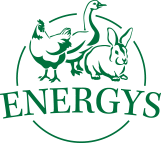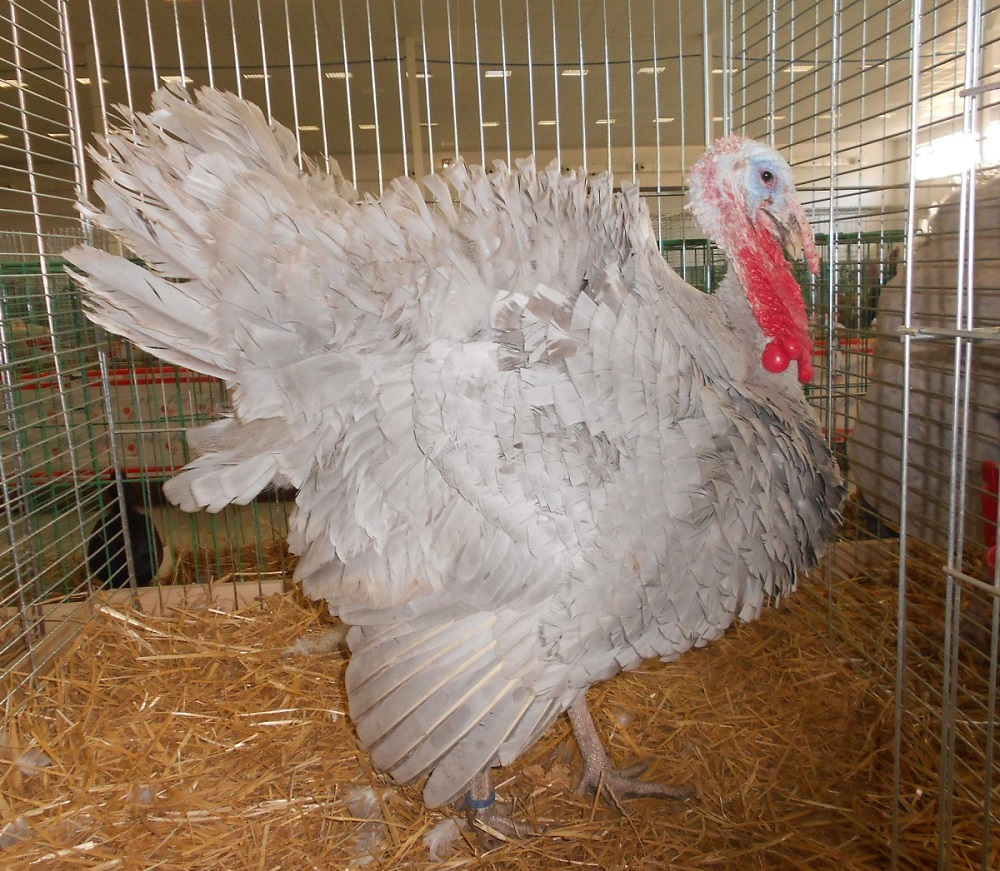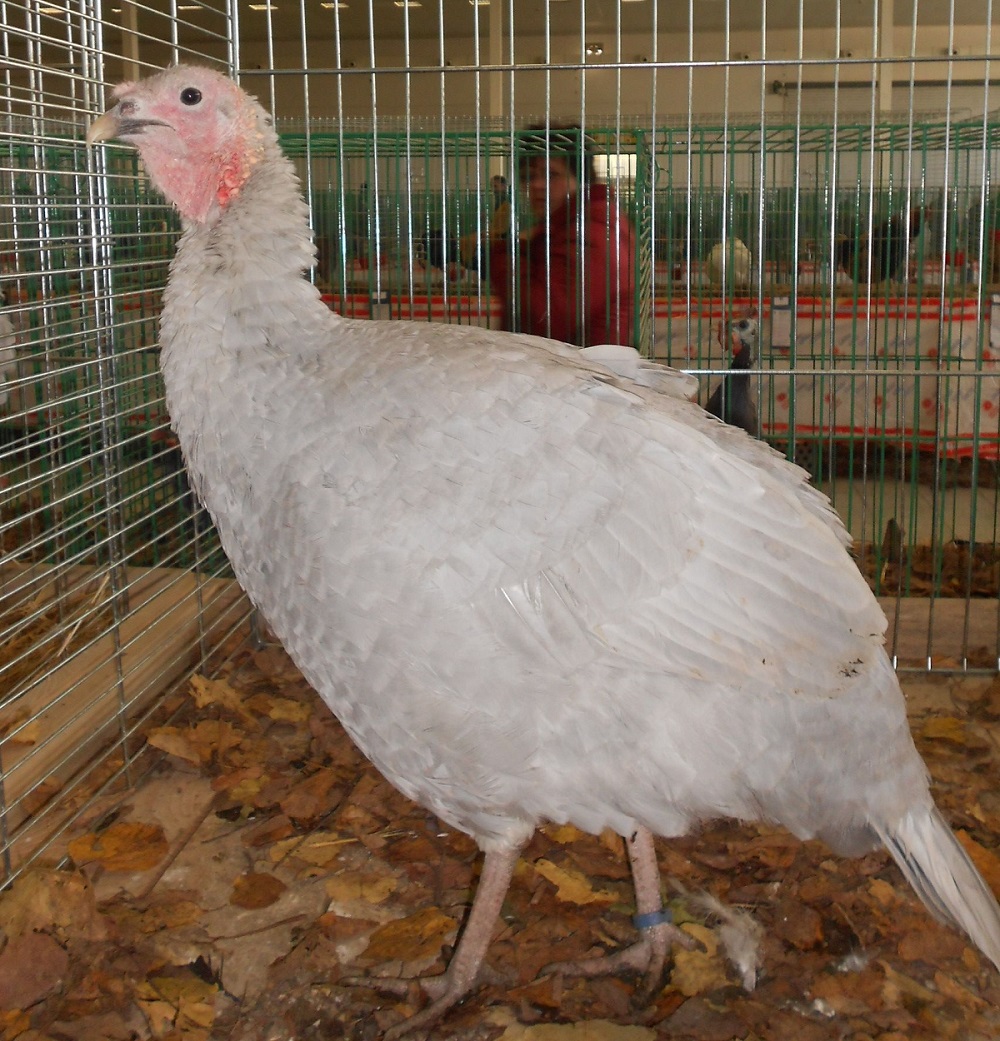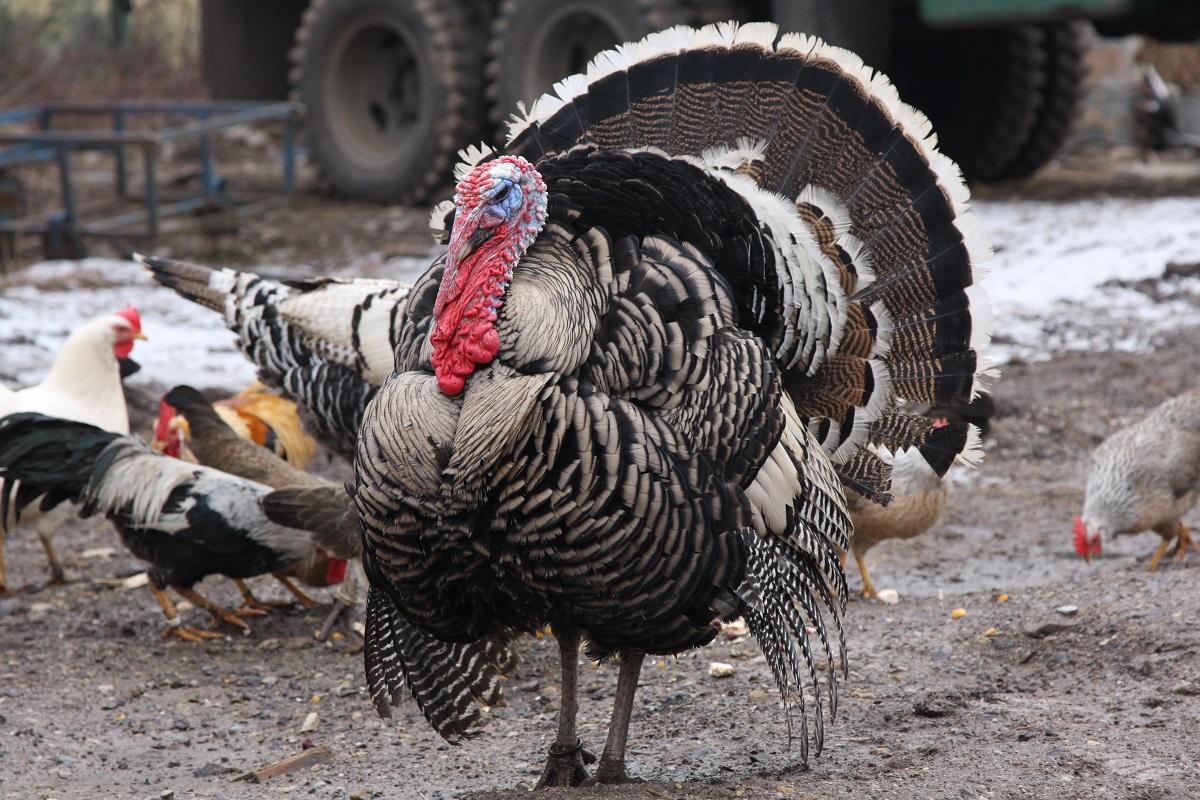Rabbits
Poultry
Laying hens
Quails
Guinea pigs
Pigs
Ostriches
Sheep and goats
Pigeons
Pheasants
Forest animals
DOMESTIC TURKEY
From the viewpoint of zoological taxonomy, turkeys are in the class birds (Aves), the order Galliformes, the family Phasianidae and the genus Meleagris.
Preparing a Building for Turkey Breeding
If a breeder wants to start breeding turkeys in a building where poultry have not been bred before, the preparations of the building will consist of spraying the walls and floors against external parasites, washing the walls and preparing the feeding troughs and water supply. An artificial hatcher is fixed over a round area enclosed with plastic sheets to ensure the necessary temperature. The external areas around the building are secured against entry by rodents. It is a good idea to place a mat with a disinfectant solution in front of the entry to the building, which a breeder will appreciate if there is an avian flu outbreak. We are talking about a building in general, because a building could be for the breeding and raising of 10 to 15 turkeys, other conditions will have to be created in the event of the rearing of 50 or more turkeys up to slaughter weight. In such case it will be necessary to arrange the basic technology. Putting in wiring, a water supply, ventilation.
Litter
We place litter in the circle (circles). When turkeys are being raised, we ensure that it is permanently dry. Litter from softwood shavings has proved to be good. Dry straw is also good. The height of the litter should be 8–10 cm throughout the hall.
Temperature
For one-day turkeys we ensure that the temperature under the hatcher is 35–36 oC. If turkeys start to be raised in the cooler parts of the year, in the early spring, it will also be necessary to set the temperature in the area around the hall to 21–25 oC. We will reduce the temperature under the hatcher every week by 3 oC, so at the age of seven weeks the turkeys will have a temperature under the hatcher or in the building of 18 oC.
At this age in good weather we ventilate and in the event that the building is linked to a grassy run we can let the turkeys into the run for a short time.
In order to be clear, we are talking about small-scale breeding during which the breeder tries to create the maximum comfort for the turkeys.
If a breeder acquires seven-week turkey broilers from a farm, raising is significantly simpler. It is necessary to arrange everything we have described until now, but the temperature in the room will be 18 oC, up to the age of 12 weeks. At this age it is possible to release turkeys into a run linked to the rearing house. Keep making sure that the turkeys do not get wet in the morning dew or the rain.
Feeding Turkeys
At the start it is possible to recommend a full-value feed mix. Producers offer mixes for the relevant age categories.
Turkeys can be fed with wheat, corn, barley, oats, millet and other feed of vegetable origin. Green feed used includes nettles, chickweed, lettuce, dandelions, etc. Thoroughbred breeders also use grazing on grass and other plants. Here turkeys find an animal element in the form of various insects.
Clean drinking water has to be available all the time.
A breeder that is primarily interested in low-fat turkey meat acquires turkeys from large-scale breeding operations, most frequently broad-breasted white turkeys.
Breeding farms offer white turkey broilers that have fast-growing abilities and a high slaughter yield. It takes 5-6 months to feed a male turkey up, they reach a weight of 25 kg, the conversion is about 3 kg feed/1 kg of increase in live weight. It takes 4-5months to feed a female turkey up, they reach a weight of 13-15 kg, the feed conversion is about 3 kg/1 kg increase in live weight. When we are talking about feed, feeding with full-value feed mixes is advised. Turkeys are sold at an age of seven weeks. Interested parties can buy them sorted by sex or unsorted, or only male turkeys.
At an age of seven weeks interested parties can also buy BIG 6 broiler turkeys. The BIG 6 hybrid turkey is the result of long-term breeding work, focused on making use of the growth potential of turkeys.
The orientation consumption of feed when raising bronze turkeys is 25 kg (up to the 24th week), in the case of broad-breasted 30 kg (Prombergerová, I., Brázda, s.r.o., 2012, Prague).
Raising of Young Turkeys
When raising young turkeys it is necessary to ensure that, in particular at a young age, they do not get wet, but we recommend preventing this throughout the time they are raised.
Broad-breasted farm turkeys are kept in internal breeding rooms up to the age of seven weeks, turkeys hatched and raised under a hatcher can go into an outdoor run when the weather is appropriate. The turkey hen will take care of them.
How Do They Bear Winter?
In contrast to chicks, which are sensitive up to the age of six weeks, adult turkeys are markedly resistant and bear the Central European winter well. It is important for it to be dry in the turkey house and the number of adult turkeys per square meter should be one, but no more than two. In the event that a breeder has a breeding or higher-level flock, the turkey house should be insulated, because the adult turkeys could start laying in the early spring and, in the case of morning frost, the eggs could freeze or it would be unsuitable for hatching.
BREEDING OF THOROUGHBRED DOMESTIC TURKEYS
If a person has higher aims and wants to enjoy the beauty of the largest domestic poultry, he can opt for a thoroughbred breed. His aim will be to continue to breed and improve turkeys, to spread them among other interested parties and, naturally, to exhibit them at exhibitions of small farm animals.
There are marked differences between male and female turkeys in terms of the shape of the head and the size of the body, where male turkeys are 1.5 to 2 times larger than female turkeys. There is very little shape variability of turkey characteristics among turkey breeds, and in terms of plumage there are no feather or other differences as is the case with chickens and pigeons. They are sexually mature at the age of 12 months. They start to lay eggs in the early spring. The hatching of baby turkeys is natural under a sitting turkey hen. The incubation time is 28 days.
We would like to present to interested parties some of the most frequently-raised breeds here. Slovakia does not have its own breed of turkeys. At Slovak exhibitions we can see German bronze, German black, German Gröllwitz, German copper, German Narragansett, Czech grey wild with a white fringe, and Narragansett (American) turkeys.
There are only three recognised breeding flocks for 2020, one each for American Narragansett, Czech wild with a white fringe and German Gröllwitz.
BRONZE TURKEYS
A heavy type of turkey with a large body type. Its body is long, it has a pear-shaped torso with good musculature that is carried in an upright position.
An old American breed of turkey that was the first to be purposely bred and retained the most characteristics of its wild forefather, but its weight and size were increased, the shine of its feathers and the intensity of its colouring were decreased. It spread from America to all continents.
It lays around 60 eggs with a weight of 80 g, the shell is a creamy brown with dark spots. Fertility is retained in full, they are the best brood hens.
Weight: male 12-16 kg, female 8-9 kg. They are marked with 27 mm rings for males and 24 mm rings for females.
NARRAGANSETT TURKEYS
An old, heavy breed of turkeys that was developed in America. They stand out thanks to their fast growth, the good meatiness of their thighs and breast. They are demanding in terms of the quantity and quality of feed. The eggs have a creamy brown shell with dark brown blotches. The eggs weigh at least 70 g. Weight: male 12-17 kg, female 9-10 kg. They are marked with 27 mm rings for males and 24 mm rings for females.
CZECH TURKEYS
They have been reared in Bohemia and Moravia for a long time, they are suitable for small-scale breeders. Excellent hardiness, relatively fast growth, they make good use of pasture.
They usually lay 20-40 eggs in two cycles. The shell is a creamy brown with brown
patches. The eggs weigh 70 g. Fertility is retained for most turkeys.
Weight of young male turkeys 9-11 kg, max. 12, min. 8.0 kg, female turkeys – 5-6 kg, max. 7.0 kg, min. 4 kg. Old male turkeys 11-14 kg, max. 15 kg, min. 10 kg, female turkeys 5.5-7.0 kg, max. 8 kg, min. 5 kg. Male turkeys are ringed with 27 mm rings, female turkeys with 24 mm rings.
They are bred with a wild white-fringe colouring (bronze-white fringe) and grey wild white-fringe colouring.
Text and photos: Dušan Barlík
Related posts
5. December 2025
In small-scale farming, it is common to encounter situations where breeders offer animals a smaller amount of complete feed mixture than recommended by the manufacturer, and replace the rest of the feed ration with grains such as wheat, barley, or corn. Grains certainly have their value in feeding, but on their own, they are not…
16. March 2022
When selecting feed (not only) for poultry, it is essential to base it on the purpose of the breeding or fattening phase. Energys hobby feeds accentuate these needs, so you are sure to choose whatever stage of development your poultry is in. But how do you choose the right feed and which is the most…
16. March 2022
When selecting feed (not only) for poultry, it is essential to base it on the purpose of the breeding or fattening phase. Energys hobby feeds accentuate these needs, so you are sure to choose whatever stage of development your poultry is in. But how do you choose the right feed and which is the most…
9. December 2021
While there are technological procedures for the rearing and fattening of common species and utility types of poultry, there are only few instructions for the so-called non-traditional poultry species, but also for runners with potential for commercial use. In this article you will find basic information on the breeding of Barbary and Mallard ducks.
22. February 2021
Spring is the period when chickens start to be fattened in domestic conditions. For the purposes of meat production, it is best to use specially-bred hybrid meat breeds that have the genetic properties of fast growth and high muscle mass. These breeds are called broiler chickens or broilers.
Related products
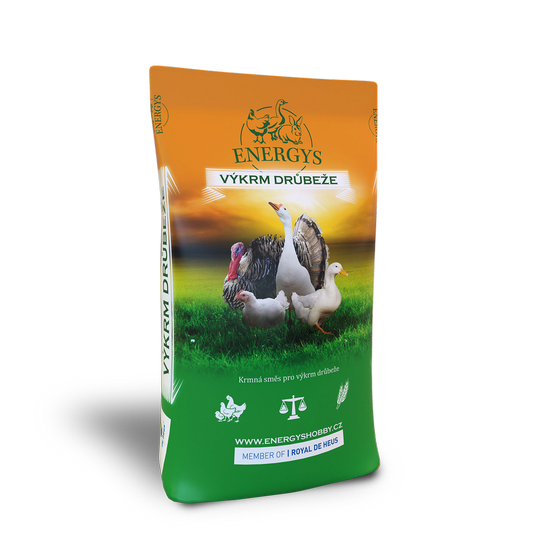
POULTRY UNI 30
A mashed concentrate for fattening of all categories of poultry, which includes the highest quality soja. It is mixed with cereals in a ratio of 20-40% (by type or phase of fattening). It contributes to fast growth and a high meat content. It does not contain coccidiostats.

BROILER MAXI
Feed for the final phase of fattening broilers. Supports a high meat content and a delicate meat taste. Start using it 5 or more days before slaughter. Does not contain coccidiostatics.

BROILER MIDI FORTE
A granulated feed mix for the intensive fattening of broilers from 15 days of age to a minimum of 5 days before ending feeding up. The Coccidiostat included lowers mortality during fattening. For the next phase of fattening Broiler MAXI is a suitable mix.

BROILER MINI FORTE
A ground feed mix with Coccidosistats, for the intensive feeding of broiler chickens up to 14 days of age and a support to fast growth a an excellent state of health in your broliers-

DUCK MINI
A high quality ground mix for fattening ducks and geese up to their 2nd week. It is suitable for fast growth and high meat content.

TURKEY MAXI
Feed for the final stage of turkey fattening. Use from the 13th week of age. It does not contain a coccidiostat.

TURKEY MIDI FORTE
A high quality granulated feed with coccidiostats for feeding turkeys from 5 to 12 weeks of age. It is the basis for fast growth, high meat content and an excellent state of health of your turkeys. The coccidiostat content lowers mortality during feeding. It continues on from feeding with Turkey Mini Forte. The live weight for turkeys at the end of this period should be around 5.9 kg for hen turkeys and 8.9 kg for cocks.

TURKEY MINI FORTE
A ground mix with Coccidiostats for fattening turkeys up to an age of 4 weeks. It is the basis for high meat content. Afterwards use the Turkey Midi Forte mix.

DUCK MAXI
A granulated mix for feeding ducks and geese from 3 weeks of age up to slaughter. The nutrients it contains support fast growth , a high meat content and a delicate meat taste.
